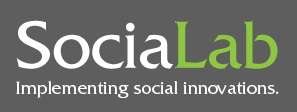 Recent provocative articles and TED talks suggest many reasons why charities are geared to underperform. Some say its goes all the way back to our Calvinist roots, which created US philanthropy as “a form of penance.”
Recent provocative articles and TED talks suggest many reasons why charities are geared to underperform. Some say its goes all the way back to our Calvinist roots, which created US philanthropy as “a form of penance.”
The root cause for underperformance is that nonprofits have a hard time finding donors that will fund their organization’s ability to innovate, professionalize and scale. In philanthropy parlance, those are “overhead” costs. And it is perceived that efficient charities spend the least on overhead to deliver services to their constituents: that’s how they get the “5 star” top rating.
Most foundations only fund charities for provision of services, not organizational development. Likewise, many individual donors search for those “most efficient” 5-star charities to give to. A big question stands out: if individual donors knew what it takes to support an effective charity – i.e., internal organizational capacity investments — would they allow more flexibility with the dollars they donate to their favorite charities?
Such revolutions take time. And this one in the “philanthropic market” would perpetuate the same dangerous dependency on “donors.” Another innovative approach that is gaining traction is for charities to learn to generate more of their own revenue by creating business lines that produce income. These new sources of revenue create independence from donors, and importantly provide “untied” funds that the nonprofits can decide themselves how best to use. This is the core mission of SociaLab’s partner organization, NESsT, which has been helping thousands of nonprofits worldwide to become more financially independent by “acting like a business” and selling products and services to further their mission.
That way we are shifting the dynamics of the entire nonprofit sector from being “laggards” to become true “disrupters.”
